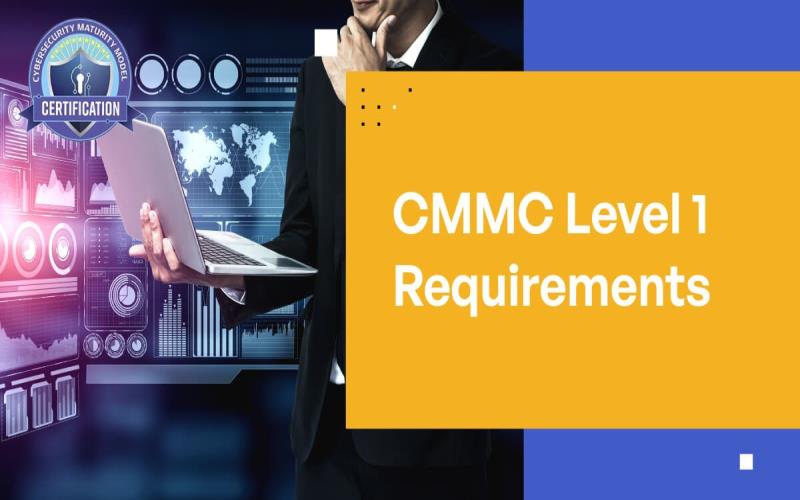While many organizations prepare for CMMC assessments by ticking off boxes on a checklist, there’s far more to a successful CMMC assessment than just meeting the basic requirements. What truly matters lies beyond the checklist: the actual readiness of systems, the ongoing practices, and the integrity of cybersecurity measures. This blog delves into what really matters in CMMC assessments, focusing on essential factors that go beyond surface-level preparation.
Evaluating the Depth of Incident Response Readiness
A well-documented incident response plan is essential, but how deeply an organization is prepared to respond to actual security incidents is what counts during a CMMC assessment. It’s not enough to have a document outlining procedures. The team must be well-versed in executing those steps efficiently under pressure. This level of preparedness reveals the true resilience of a company’s cybersecurity posture.
Assessors often look at incident response drills or tabletop exercises to ensure readiness. They want to see how fast and effectively the team can detect, isolate, and mitigate a threat. A well-prepared company will have practiced scenarios and developed muscle memory, not just theoretical knowledge. This depth of readiness is key to passing a CMMC assessment and ensuring long-term protection against evolving cyber threats.
Scrutinizing Actual Implementation of Security Practices
Security policies and protocols mean little if they aren’t properly implemented throughout the organization. During a CMMC assessment, the focus shifts from paperwork to real-world execution. Assessors will examine how security practices are embedded into daily operations, ensuring that everyone, from top management to front-line employees, adheres to established procedures.
For example, assessors may review how access controls are applied in real time. Is there a consistent approach to limiting access to sensitive data, or are shortcuts being taken? The integrity of these practices under real-world conditions, not just theoretical guidelines, will be under scrutiny. This thorough evaluation ensures that security isn’t just on paper but is woven into the fabric of day-to-day operations.
Analyzing Real-Time Network Vulnerability Management
Keeping a network secure requires constant vigilance, not just periodic assessments. Real-time vulnerability management plays a crucial role in this process, and it’s something assessors pay close attention to during a CMMC assessment. The ability to quickly identify and address vulnerabilities before they can be exploited by bad actors is a major marker of a robust cybersecurity framework.
Organizations that invest in advanced vulnerability management tools and continuous monitoring systems demonstrate a proactive approach to network security. CMMC assessments will look beyond automated scans, evaluating how effectively the team responds to vulnerabilities as they arise. Having a plan in place for immediate patching or mitigation, combined with a consistent track record of maintaining secure networks, is essential for satisfying CMMC requirements.
Assessing the Maturity of Continuous Risk Monitoring
Cybersecurity isn’t static, and neither is risk. A key aspect of CMMC assessments involves evaluating an organization’s ability to monitor risks on an ongoing basis. Continuous risk monitoring allows companies to stay ahead of threats by identifying and addressing new vulnerabilities as they emerge. The maturity of this process is crucial in determining the overall cybersecurity health of an organization.
Assessors will examine how well the company’s risk monitoring systems operate. Is the organization reactive, only addressing issues when they become problematic, or are they proactive in preventing risks from escalating? Companies with mature risk monitoring systems can demonstrate a higher level of security, showing that they have measures in place to continuously assess and mitigate risks in real time.
Ensuring Consistency in Personnel Security Training
Cybersecurity isn’t just about technology—it’s also about people. Consistent and thorough security training for all personnel is vital for passing a CMMC assessment. Assessors don’t only want to know that training has been offered; they also want to verify that it has been understood and applied correctly in everyday work.
Regular, updated training programs ensure that everyone in the organization is on the same page when it comes to security protocols. Whether it’s recognizing phishing attempts or understanding the importance of multi-factor authentication, well-trained employees are the first line of defense in cybersecurity. The consistency of these programs and their real-world application will be a key focus during any CMMC assessment.
Verifying the Integrity of Data Handling and Encryption Techniques
In today’s data-driven world, handling sensitive information with care is more important than ever. During a CMMC assessment, the integrity of how data is managed and protected will be a major focal point. Assessors look for strong encryption practices, both in storage and transmission, to ensure that sensitive data cannot be easily intercepted or accessed by unauthorized parties.
But encryption alone isn’t enough. How the organization manages keys, updates encryption protocols, and ensures proper data access controls will be under scrutiny. Companies that have clearly defined data handling procedures and consistently apply them across all levels of the organization stand a much better chance of passing the CMMC assessment. Data integrity and security are paramount in ensuring that sensitive information remains protected from external threats.

